My tortoise partner has moved from the east coast to the west coast. He and his wife are temporarily living with his mother in Northern Calif. He came down to visit me today and we trimmed some badly over grown beaks.
My Manouria tortoises' beaks require a trim about once a year. They live outside and graze, however their beaks grow either funny or over-grown.
We put the tortoise on a 5 gallon bucket and we use a Dremmel Tool with a metal cutting edge. William (my partner) first makes a line across where he wants to cut the beak, then he starts grinding away on that line.
This is Darth. I forgot to get a picture before William started, and in the picture, half the beak is done already. Darth's beak grows long, flares out at the bottom, and splits up the middle. The white in the picture is beak dust:
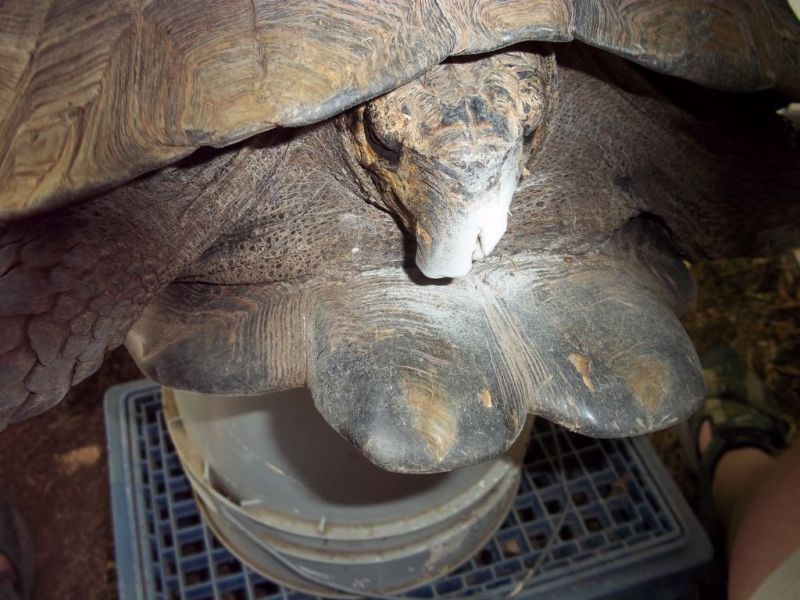
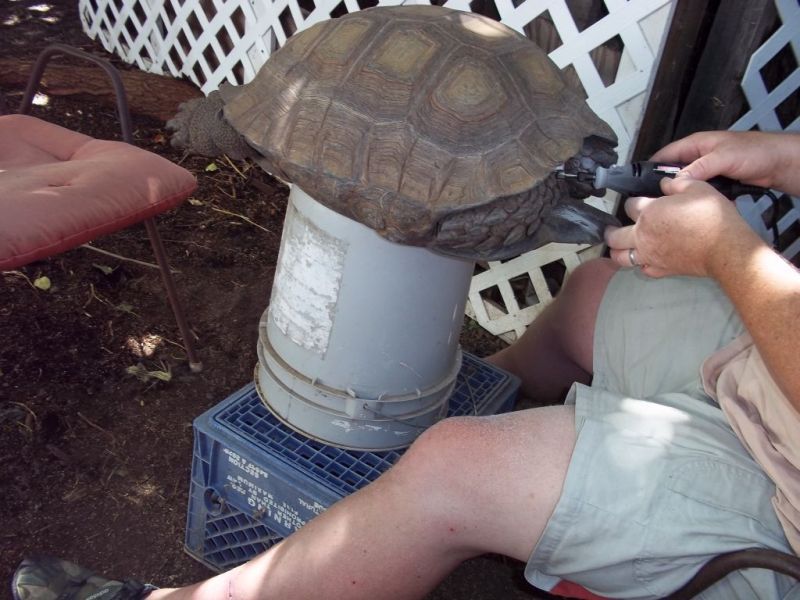
This is Phae. Its not always easy to get to the mouth. And Phae's beak grows in a scissors shape, with the top growing outside of the bottom only on one side, and the bottom grows up on the other side. I didn't get a good picture to show you the "scissor."
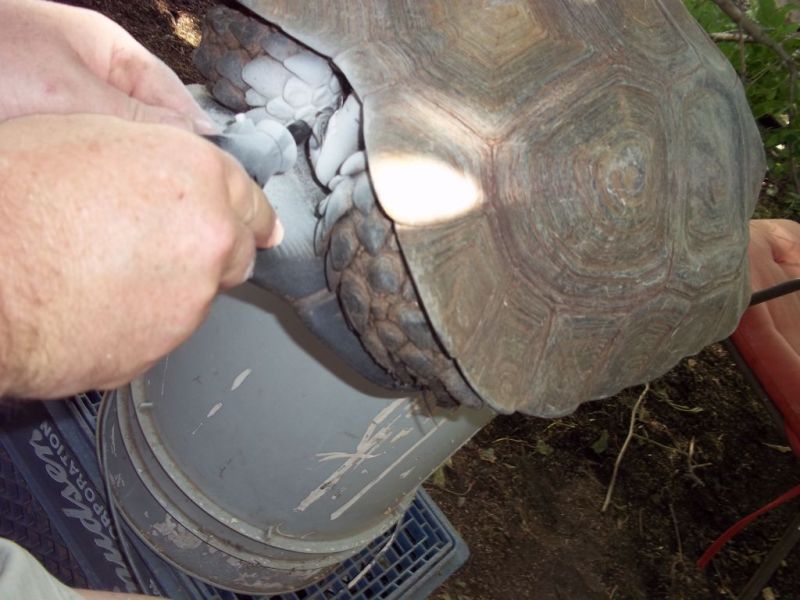
This is Medea. She has a really thick upper beak. I've seen pictures of adult Manouria tortoises and quite a lot of them have Medea's same beak, so I think it's sort of normal for the species:
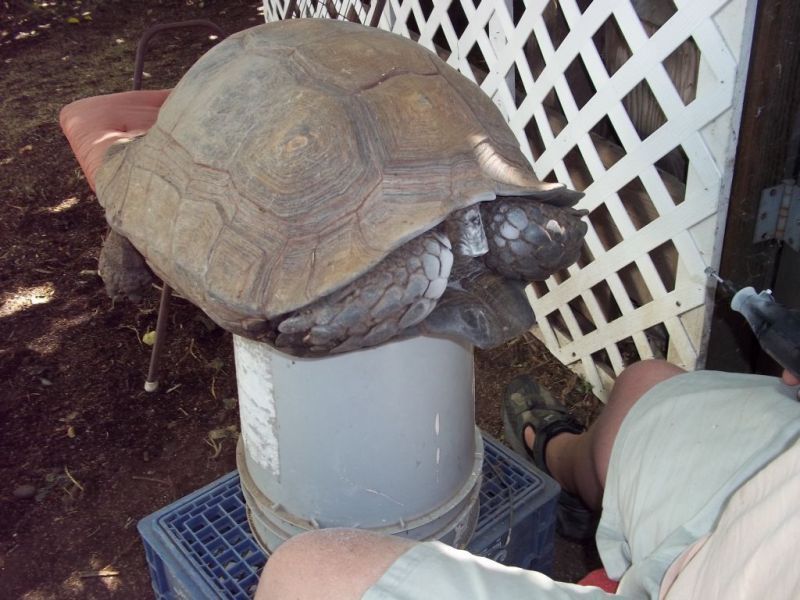
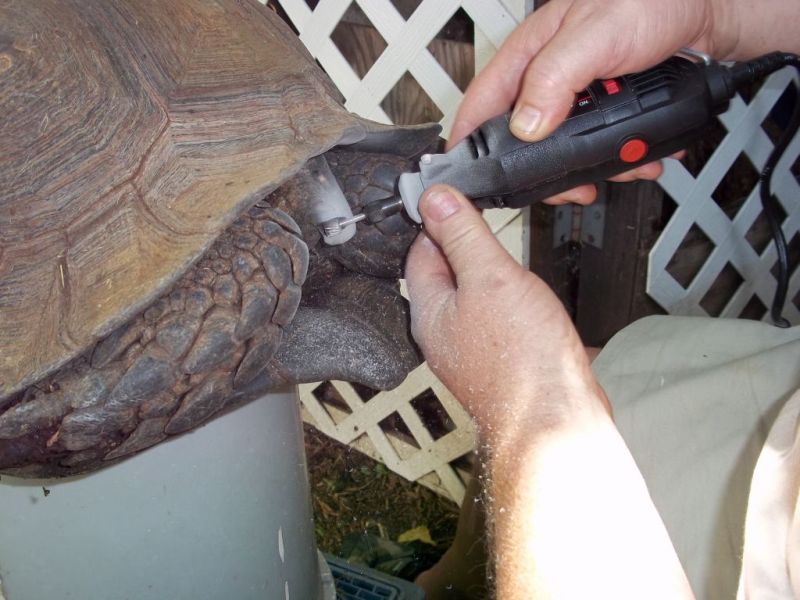
My Manouria tortoises' beaks require a trim about once a year. They live outside and graze, however their beaks grow either funny or over-grown.
We put the tortoise on a 5 gallon bucket and we use a Dremmel Tool with a metal cutting edge. William (my partner) first makes a line across where he wants to cut the beak, then he starts grinding away on that line.
This is Darth. I forgot to get a picture before William started, and in the picture, half the beak is done already. Darth's beak grows long, flares out at the bottom, and splits up the middle. The white in the picture is beak dust:


This is Phae. Its not always easy to get to the mouth. And Phae's beak grows in a scissors shape, with the top growing outside of the bottom only on one side, and the bottom grows up on the other side. I didn't get a good picture to show you the "scissor."

This is Medea. She has a really thick upper beak. I've seen pictures of adult Manouria tortoises and quite a lot of them have Medea's same beak, so I think it's sort of normal for the species:

